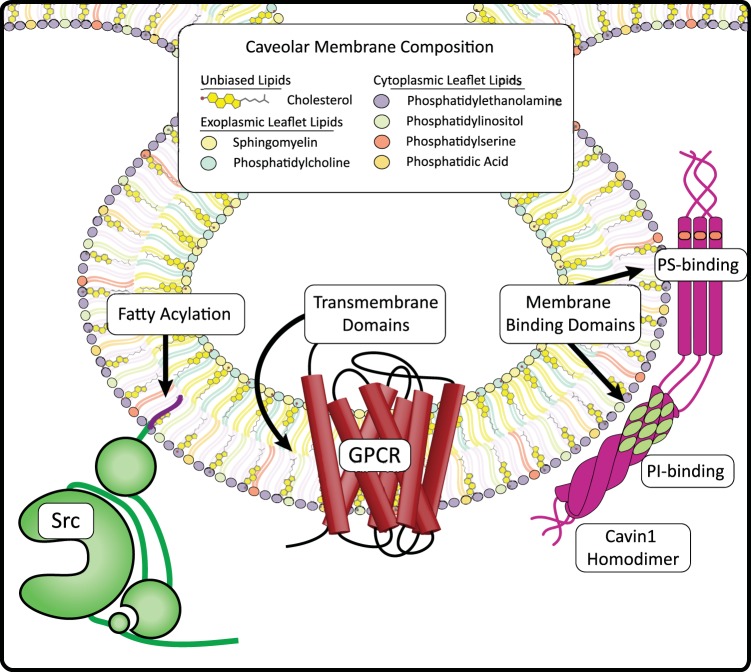Fig. 5.
Caveolae membrane composition and caveolae-targeting signals. Caveolae membranes are enriched in phospholipids, sphingolipids, and cholesterol. This diagram depicts the distribution of membrane lipid species within a caveolae bilayer. Cholesterol is concentrated within caveolae, representing a third of all lipids, and is present in both leaflets of the bilayer. Sphingomyelin is slightly more prevalent than PC in the exofacial leaflet of caveolae, while PE composes more than half of the cytoplasmic leaflet. Also in the cytoplasmic leaflet, the anionic phospholipids PI, PS, and PA compose the minor fraction of lipid content with PI roughly twice as prevalent as PS and PA at half the concentration of PS. Proteins can be targeted to caveolae through transmembrane domains (e.g., GPCRs, Cavs), fatty acylations (e.g., Src myristoylation) and membrane binding domains (e.g., Cavin1 PI- and PS-binding domains).

